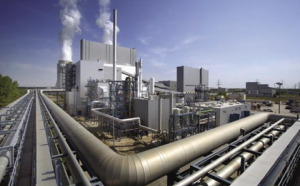Reducing CO2 levels will require a substantial shift from fossil fuels to renewable energy sources, but given that this is unlikely to occur soon enough to prevent significant climate change, other solutions may be needed. Carbon Capture and Storage (CCS) technology has been touted as a low-carbon approach – it involves removing CO2 from power plants and storing it underground.
While CCS may sound like an environmentally friendly alternative, there are significant drawbacks associated with the technology, including its heavy economic costs and the risk of seismic activity being triggered. Furthermore, in some countries, such as Germany and Austria, there are laws outlawing geological storage.
But rather than treating CO2 emissions as waste, some argue that they could be used to generate electricity or produce useful chemicals. Still in its development stages, carbon capture and utilization (CCU) technology could ultimately prove more sustainable than CCS. Possible ideas include storing CO2 in cement, or using algae to generate energy.
Some companies such as Calix, a Sydney-based Australian cement and minerals company, have been investigating ways to store CO2 in cement. According to Environment & Energy Publishing, global cement production accounts for roughly 5% of the world’s CO2 emissions. Calix’s solution for reducing CO2 emissions involves mixing treated lime with gasified fuel. This creates limestone and separates CO2 in the process, requiring only a fraction of the energy needed to make conventional cement.
Other studies point to the use of excess CO2 in the culturing of algae, which can then be converted into a carbon-neutral biofuel. A study conducted by the University of Texas at Austin found that algae (which requires CO2 and water) could potentially produce 500 times more energy than required for it to grow. However, given its water needs, growing algae in water-scarce countries like China might not be viable.
Even more radically, if CO2 could be used to produce more energy, this would obviously help reduce fossil-fuel emissions. A team of Dutch scientists led by Bert Hamelers published a report suggesting that the reaction between CO2 and water has the potential to generate an additional 1,570 billion kilowatts of energy annually. This corresponds to roughly 400 times the power produced by the Hoover Dam, which provides electricity for 1.3 million people in the United States.
Another approach, mineral carbonation, involves the reactions of magnesium or calcium oxides (typically found in industrial waste) with CO2 to release significant amounts of energy.
Despite enthusiasm amongst some scientists (and venture capitalists), there are still many doubts about the viability of both CCS and CCU. According to Peter Styring, Professor of Chemical Engineering and Chemistry at the University of Sheffield, CCU alone will not meet the demands of required carbon dioxide mitigation and can exist only as a complementary technology to CCS.
The low price of carbon also poses a significant challenge, says Michael Priestnall, CEO of Cambridge Carbon Capture. “At the moment it’s all technology push and no market pull. The market pull is either going to come from a decent carbon price, or from legislation and regulation on CO2 emissions,” said Priestnall. “At the moment, there aren’t sufficient commercial drivers for industry to do any CO2 sequestration.”
Given the uncertain futures of CCS and CCU, Ailun Yang from the World Resources Institue thinks it is important to encourage governments in their efforts to invest in sustainable energy systems. “Without political will to tackle climate change, it is difficult to develop a strong supportive framework.”
Sceptics such as energy analyst Chris Nelder are doubtful these technologies will ever become a commercial reality because of the high costs associated with capturing CO2. “By the time its proponents hope that it will be cheap enough to be commercially viable, renewable power will be cheaper,” he argues. Nelder also pointed out that the amount of carbon that can be captured and used doesn’t come close to the amount of CO2 we are emitting.
Organisations such as Greenpeace have argued along similar lines. Li Shuo, from the Greenpeace East Asia climate and energy team, has called CCS a “false hope”. According to Li, “We don’t have any established, mature and integrated CCS projects across the board.” He added that the storage technology is quite questionable at this moment. “There are great geological risks and no feasible way to decrease the enormous costs.”






